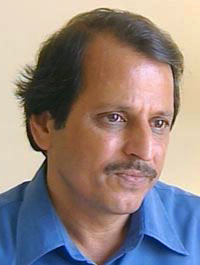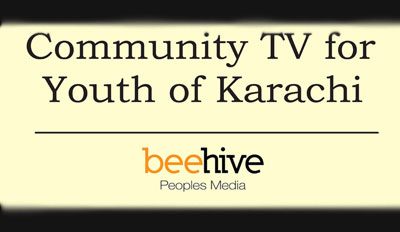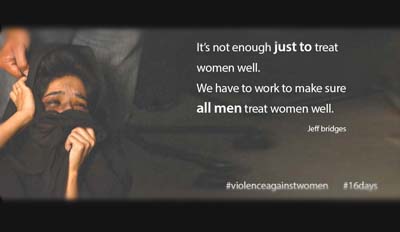What damage control? What damage?
How PPP sees its public image and what it will never do to improve it…

Mazhar Abbas
It is always difficult to predict the future of politics in Pakistan and for that matter of any political party or leader, as politics here, is the game of possible. But in the recent past, one party which has become most predictable is the Pakistan People’s Party, one that has miserably failed to come out of the trauma of Benazir Bhutto’s assassination.Today, the party stands a little chance at making a comeback in the 2018 elections since the road to Islamabad is getting more and more difficult for Asif Zardari or Bilawal Bhutto led PPPP or PPP. So, what is the way forward for the party, which once stood tall as a symbol of resistance with its anti-establishment, liberal and secular approach? The biggest problem the party faces today is their lack of political philosophy, program and above all leadership, which once used to be its strength under the dynamic leadership of Zulfiqar Ali Bhutto, its founder and later under Benazir Bhutto.
A few months back, PPPs co-chairperson, Mr Zardari, along with PPPs main Chairman, Bilawal Bhutto Zardari, and the leading lady of the party, Faryal Talpur, who is also Asif Zardari’s sister, held a candid discussion with its senior party leadership. The purpose was to look into the causes of the party's failure, especially in the Punjab and Kyber Pakhtoonkhwa, in the last elections. They also deliberated the weakness within the party and the external factors tarnishing its image, tagging it as the party with the most corrupt leadership.
In a way this was a complete "postmortem" of the ‘post-BB PPP.’ Unfortunately, most of those conducting the exercise were those responsible for this situation. No wonder, in the end the postmortem report came as they desired: a clean chit to the leadership. The purpose of this Dubai meet up was to find a way forward. The minor changes, however, apparently lack direction and remained consistent in maintaining the status quo, as voiced out by many a dissenting outcries.
For instance, Mr Zardari was advised by the Punjab leadership to distance itself from the top management of the party, abolished the office of Co-Chairman and if at all, he wishes to remain associated with the party, it could be in the form of a "rahabar." The other proposal was to have one PPP, either the Pakistan People’s Party or Pakistan People’s Party Parliamentarian. The PPPP was formed after former military dictator, retired General Pervez Musharraf tried to keep PPP out of parliamentary politics in 2002 elections.
There is no doubt that PPP has been the victim of dictatorial conspiracies since 1977, and never accepted by the establishment. Like, under General Zia ul-Haq the party's original election symbol, "sword" was removed from the Election Commission's list. It faced registration problems and even Benazir was disqualified to contest in 2002, along with Nawaz Sharif. But, neither Zia nor Musharraf were able to damage party's popularity. In 2002, the four P, party under Makhdoom Amin Fahim as President emerged as single largest party. So, Musharraf then created a split and another group by the name of Pakistan People’s Party (Patriot) was created.
The party has survived military dictatorships and many a splits, but it become the victim of self-inflicted injury after Benazir. The PPP got full five years to deliver but the day Mr Zardari decided to take complete control, both of the party and the government, the writing was on the wall.
Yes, in 2013 elections, politics become difficult for liberal and progressive parties like PPP, ANP and MQM. Their leaders and workers were killed by TTP but, the other vociferous factor was PPP's poor governance and massive allegations of corruption, from top to the bottom. Ironically, the leadership could not even uplift the party nor unearth the murder conspiracy of its own leader, Benazir Bhutto leaving scores of unanswered questions. failed The fact is that Mr Zardari remains unsuccessful in improving his image despite him being a "born survivor," who completed his term, delegated all his Presidential powers to the Parliament, played key role in giving provincial autonomy through 18th amendment. Today, in the post 2013 scenario even the PPP candidates in any elections including local bodies were not ready to put his photograph on their banners and posters.
In such a situation his decision to ignore the advice of party leaders like Choudhry Aitizaz Ahsan, Qamarzaman Kaira and Nadeem Afzal Chang, and become the President of PPPP, after death of Amin Fahim was a clear indication that Mr Zardari is in no mood to leave space for his son nor in a mood to allow the party to revive its image in the Punjab.
Secondly, there are serious split within PPP in the Punjab and Kyber Pakhtoonkhwa, for which PPP Chairman, Bilawal Bhutto Zardari visited the two provinces without holding a single public meeting, assessing the ground situation and the level of differences among them. Although, he gave positive signals of making PPP, "democratic" by holding elections, there weren’t enough fireworks in his tour.
The party, which established a record of winning more general elections than any other party in Pakistan with its liberal and secular face, had been confined to Sindh in 2013 elections. Unfortunately, the performance of its provincial government is also not up to the mark.
Not much time is left for the revival of PPP in the presence of strong PTI unless PPP goes to its basic program and enforces it where it is in power i.e. Sindh. Until then, the chance for the revival of the party at the national level looks bleak.







